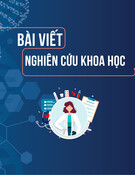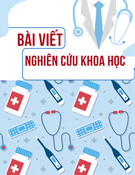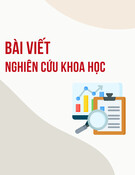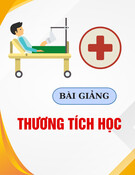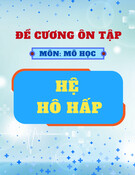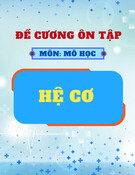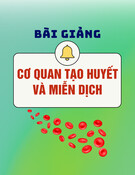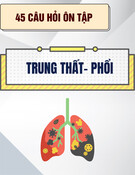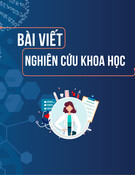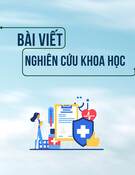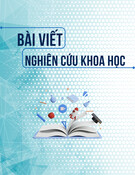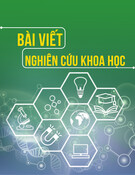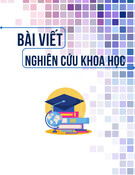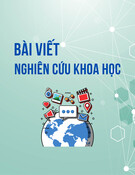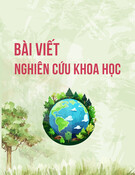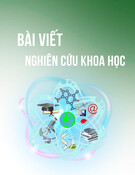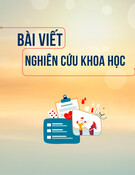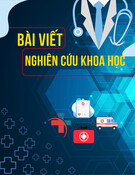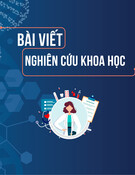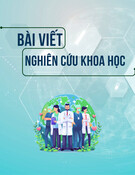
16
JOURNAL OF MEDICAL RESEARCH
JMR 184 E15 (11) - 2024
Corresponding author: Dau Thuy Duong
Hanoi Medical University
Email: dauthuyduong@hmu.edu.vn
Received: 23/06/2024
Accepted: 12/07/2024
I. INTRODUCTION
ANDROGENIC EFFECTS OF ALCOHOLIC
EXTRACT FROM CNIDIUM MONNIERI (L.) CUSS FRUITS
IN EXPERIMENTAL ANIMALS
Dau Thuy Duong1,, Nguyen Tran Thi Giang Huong1
Le Minh Ha2, Pham Thi Van Anh1, Tran Quynh Trang1
1Hanoi Medical University
2Vietnam Academy of Science and Technology
Traditional medicine used the fruits of Cnidium monnieri (L.) Cuss to treat male hypogonadism
and male infertility. This study was carried out to investigate the potential androgenic properties of the
alcoholic extract of Cnidium monnieri (L.) Cuss fruits (CFE) in peripubertal castrated male rats. Rats were
randomly divided into 5 groups and castrated 7 days before being administered 0.5% CMC, testosterone
and CFE at 50 mg/kg/day, 150 mg/kg/day and 250 mg/kg/day, respectively, for 10 days. The relative
weight of five target androgen-dependent organs (including seminal vesicles (SV), ventral prostate (VP),
paired Cowper’s glands (COW), glans penis (GP) and levator ani-bulbocavernosus (LABC) muscle and
blood testosterone level were evaluated. Our results showed that CFE at 150 mg/kg/day and 250 mg/
kg/day increased the weights of two or more target organs and blood testosterone level. In conclusion,
CFE at both doses of 150 mg/kg/day and 250 mg/kg/day has the androgenic activity in male rats.
Keywords: Cnidium monnieri (L.) Cuss fruit, target androgen-dependent organs, testosterone, Wistar
rats.
Androgens, produced mostly by the
testes, play a vital role in male reproductive
and sexual functions. Androgens are crucial
for the development of male reproductive
organs, such as the epididymis, vas deferens,
seminal vesicle, prostate and penis.1 Male
hypogonadism is a clinical syndrome caused
by deficient androgen production, which can
negatively affect the functions of many organs
and the patient’s quality of life.1,2 This condition
can manifest at any time in life but increases
with age and contributes to male infertility.2 It
is diagnosed on the basis of clinical signs and
symptoms related to androgen deficiency.1
Male hypogonadism is associated with
several physical and psychological symptoms
that requires long term testosterone treatment.
The goal of testosterone treatment is to restore
the symptoms, improves the sexual functions
and maintains well-being. However, systemic
testosterone replacement therapy can produce
adverse effects, including effects on prostate
glands, mammary glands, liver and the
cardiovascular system.1,2
Herbal plants have been used for a long time
to improve the male sexual and reproductive
function in countries with long-standing
traditional medicine. Many herbal products
are also marketed with the treatment goal of
increasing testosterone levels, including Allium





